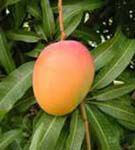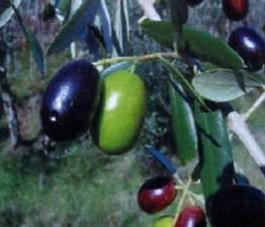
One of the most alluring aspects of making your own soap and skincare is controlling what is in the products, and being able to choose which oils, butters and other ingredients you want to include.
Almond Oil, Sweet: Prunus Dulcis (Sweet Almond) Oil
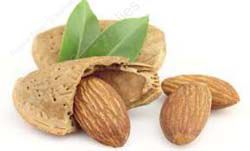
This nutrient-rich oil is suitable for all skin types. Almond Oil is recommended for chapped, itchy or irritated skin and is a popular inclusion for use in massage and general skin care formulations. It is excellent for use in healing and moisturising dry and chapped skin. A few drops in facial masks helps with facial dryness. Sweet Almond Oil exhibits excellent penetrating qualities, low comedogenicity and good spread-ability on the skin, making it ideal as a massage oil or as a carrier for Essential Oils. Almond Oil works wonderfully in soaps, as a superfatting oil at up to 10%.
Recommended Usage Levels: Soaps: 5 - 10%, Lotions & Creams: 5 - 15%, Balms: 5 - 10%
Apricot Kernel Oil: Prunus Armeniaca (Apricot) Kernel Oil
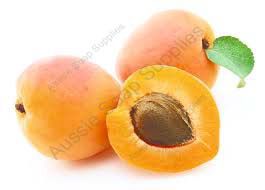
This oil is a lightweight oil, and a little finer and more expensive than Sweet Almond Oil, but it has similar actions. Apricot is a little lighter textured than many oils and is extracted from apricot pits; it is high in mineral and vitamin content. Useful in Lip Balm and lotions. High in linoleic and oleic acids it is often a key ingredient in facial tonics and cosmetics, this oil is very useful in the care of mature, sensitive, dry or inflamed skin. Apricot Oil works well in soaps, as a superfatting oil up to 10%, above that percentage and it can produce a softer bar that doesn't last as long in use.
Recommended Usage Levels: Soaps: 5 - 10%, Lotions & Creams: 5 - 15%, Balms: 5 - 10%
Avocado Butter: Persea Gratissima (Avocado) Oil/Hydrogenated Avocado Oil
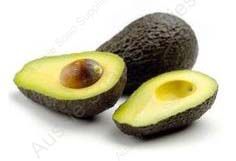
This butter is obtained from the fruit of the Avocado tree (Persea Gratissima) which grows in sub-tropical regions of the world. The butter is created from the oil of the Avocado fruit through a unique hydrogenation process which yields a soft, yellowish butter with mild odour. Avocado Butter has excellent melting properties which makes it very suitable for skin care. This butter can be used in all types of soap and skincare products to improved moisturisation and softens rough, dry skin. In soap Avocado Butter offers the same benefits as the oil - a rich, luxurious and nourishing ingredient that contributes to moisturising and conditioning at a superfatting level.
Recommended Usage Levels: Soap: 3-6%, Lotions & Creams: 3-5%, Balms: 5-100%, Hair Conditioner: 2-5%
Avocado Oil: Persea Americana Oil
Avocado Oil exhibits excellent penetrating qualities and good spreadability on the skin, making it ideal as a massage oil or carrier oil for Essential Oils. Avocado oil is extracted from the pulp of avocado fruit and is best used at 15% of less in cold process soap or the hardness of the bar will be affected. Avocado has a high percentage of fatty acids and unsaponifiablesmaking it a good addition to soap recipes. Adds emollience to creams and lotions and bar soaps and exhibits low comedogenicity on the skin. Avocado is a rich, luxurious and nourishing oil that is moisturising and conditioning and a good inclusion for soap, creams and lotions. Avocado oil is excellent in hair and scalp formulas. It absorbs into the skin and scalp easily and is high in Vitamin A & E. It is good for dry and damaged skin and is known to help with eczema and psoriasis - some say even hair loss! May be used in cosmetics, toiletries, bar soaps, massage oils, hair care and sun care applications.
Recommended Usage Levels: Soap: 5 - 15%, Lotions & Creams: 3 - 7%, Balms: 3 - 10%, Hair Conditioners: 3 - 5%
Beeswax: Beeswax
Beeswax is sometimes used to harden soaps and impart a natural fragrance and to add firmness in creams, lip balms and lotions bars. Used as one of the hard oils for making healing ointments. In Cold Process Soap you can use it at about 40 - 60g per kilogram of oils (4 - 6%) to make your soaps harder, but too much and you will cut the lather. Temperature in cold process soap is critical, you need to trace at 60 - 75°C (140F+) if using the wax, otherwise it will set up in the cooler traced soap and cause gritty particles - not great to wash with! If using the natural, unrefined wax (you'll need to remove bits from it including wings and things), it seems to give soap more of a honey scent than honey does.
Suggested Usage Levels: Soap: maxiumum 6%, Balms: 3 - 25%
Calendula Oil (Infused): Calendula officinalis

This oil is made by infusing Calendula Petals in a good carrier (Sweet Almond Oil), which produces a golden yellow coloured oil. Calendula herb is both regenerative and anti-inflammatory and is both softening and soothing to dry skin. Historically it is known for slow-healing wounds, burns, rashes, ulcers, helps stimulate the growth of new tissue, for inflamed, dry and damaged skin and for Eczema and soothing skin eruptions. It is very mild and a great addition for baby soaps, lotions and creams. Good for all skin types. Can be used as a colourant in Soap.
Suggested Usage Level: Up to 20% when in a carrier
Camellia Oil: Camellia oleifera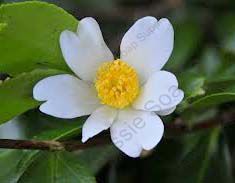
Luxurious, silky Cosmetic Grade Camellia Oil is cold pressed and rich in Vitamins A, B and E, which are very useful to combat aging. Camellia Oil is a "non-greasy" oil excellent for use in skin and hair products. Pressed from the seeds of the fruit, Camellia Oil is high in oleic acid and offers antioxidant properties. Camellia Oil is especially suited for facial use due to its rapid absorbency. Rejuvenating and restorative, giving the skin a radiant glow, it protects from damaging environmental conditions. Camellia promotes the healing of scars, and can be useful in treating freckles and age spots as it promotes elasticity of the skin. Camellia is a very stable oil, which means it has a long shelf life. Highly Recommended for all skin types, but particularly Dry, Mature and Sensitive.
Suggested Usage Level: Up to 100%
Canola Oil: Canola Oil
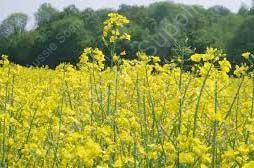
After 25+ years of soaping I rarely ever include canola in my soaps. Why? It have noticed it shortens shelf life and the bars are more prone to DOS, particularly in Australia's humid areas, and even in Perth. That said it can be useful for slowing trace, and producing a whiter bar. Keep Canola at 10% or lower. and combine with Coconut Oil, Palm Oil and other solid performers in soap. You can sub a little of the Olive Oil content with Canola too. It produces a creamy lather.
Suggested usage level: Up to 10%
Carrot Oil (Infused): Daucus carota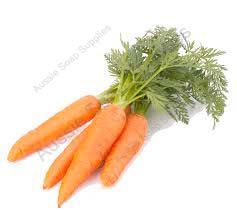
Carrot oil is rich in beta-carotene, vitamins B, C, D, and E, and essential fatty acids. This oil also has an anti-inflammatory action, which makes it a useful treatment for burns. Carrot is often used as an anti-aging treatment and is commonly found in skin creams. Traditionally used for a wide variety of complaints, and is made by extraction of the herb into an oil base. It is obtained from carrot root; this is not the Carrot Seed Essential Oil. This rich golden oil is high in Vitamin A and Beta-Carotene and is a healing addition to facial oils, creams, balms and lotions for dry and mature skin. Like calendula, its deep orange colour is a brilliant addition to creams and is quite soothing. Colours Soap a bright orange/yellow.
Suggested Usage Level: Up to 20% when in a carrier
Castor Oil: Ricinus Communis
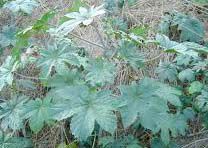
In a class of its own! Castor is thick and viscous and is a staple in combination with other vegetable oils to produce a nice soap with wonderful long lasting lather. However, use it on its own, and the result will be a soft bar of soap. Castor oil added to your soap will increase lather significantly, but I find its best to stick at 15% or under. Superb addition to shaving soaps. Castor Oil is known to beof help to dry and aging skin because of its humectant properties. Good for all skin types. Use in lip balms for a glossy smacker type balm.
Suggested Usage Levels: Soap: Up to 3 - 10%, up to 15% for Cold Process Shampoo Bars, Lip Butters & Balms: 5 - 15%
Cocoa Butter: Theobroma Cacao
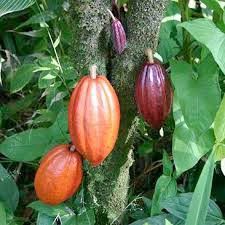
Cocoa Butter is obtained from the fruit of the Cacao tree which grows in tropical regions throughout the world. The butter is extracted from the seed kernels and is further refined to yield a tan/yellow coloured butter with pleasant cocoa (chocolate-like) odour. A hard butter with steep melting curve ideal for body care products, particularly for soap and when thickness/hardness together with emollience is required. Cocoa Butter has wonderful skin softening and moisturising properties, and can be used to make balms and creams thicker and harder, with or without beeswax. Good for normal to dry skin. When I use it in soap, I substitute it for one of the hard oils like Palm or Coconut, and I use it because of the smoothness it will give a light cocoa scent that enhances and gives depth to fragrant oils like Raspberry. Cocoa Butter may be used in a variety of cosmetic, toiletry and pharmaceutical applications to reduce dryness and improve skin elasticity.
Suggested Usage Levels: Soap: 3 - 10% % (Up to 15% for a light cocoa scent), Lotions & Creams: 3 - 5%, Balms: 5 - 100%
Coconut Oil: Cocos nucifera
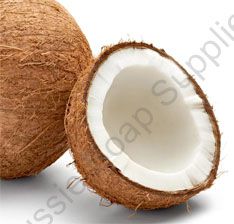
This is one of THE oils for soap making that gives natural soap its lather. In its natural form it is very good for the skin. Natural Coconut Oil can be used in soaps, creams and lotions and is good for all skin types. It makes a hard bar with big bubbly lather.... an absolute must for veggie soaps. It is seen as "76°F" and "96°F" in some places - this is the melting point, we stock the "76°F". Both have the same sap value. Needs to be properly balanced with conditioning oils because it does such a good job of cleaning. Coconut produces big, generous bubbles, and too high a percent can feel drying to some people.
Recommended Usage Levels: Soap: 5 - 30%, Lotions & Creams: 1 - 15%, Balms: 5 - 40%, Hair Conditioner: 2 - 5%
Extra Virgin Coconut Oil: Cocos nucifera
This naturally fragrant oil is produced through a Cold Process extraction method and smells just like fresh coconuts. It is solid at room temperature, but liquid at higher temperatures. Extra Virgin Coconut Oil is recommended for skin care, hair care and as a superfatting ingredient in soap making. Recent studies show Coconut Oil is beneficial when used in cooking. As Coconut has a natural affinity with hair and offers superior conditioning effects on scalp and hair it is brilliant when used as a treatment, and in hair conditioners.
Suggested Usage Levels: Soap: 5 - 30% (But the gorgeous smell is wasted), Lotions & Creams: 2 - 20%, Balms: 5 - 100%, Hair Conditioner: 2 - 5%
Fractionated Coconut Oil: Caprylic/Capric Triglycerides
Fractionated Coconut Oil (aka FCO) is a clear, colourless, odourless oil which does not leave a greasy feel, or stain sheets or massage towels. It s made from a fractionation process which separates light and solid parts of Coconut Oil. This fractionation leaves the Coconut Oil very light and allows it to sink right into the skin, and together with the ease with which is washes out of linen, is much sought after by massage therapists. FCO remains a liquid right down to quite low temperatures, and does not go rancid, giving it a long, long shelf life. By using FCO in your lotions, they achieve a longer shelf life. Not recommended for soapmaking.
- It can be sprayed through a pump sprayer directly onto your skin.
- It leaves your skin feeling just wonderful and silky smooth with no greasy slick and no drag. FCO takes absolutes and essential oils as well as fragrances easily and so is great for perfume making.
- It is very useful as a Baby Massage Oil, and also for the elderly and infirm, as it is so fine and easily absorbed.
Suggesteded Usage Levels: General use: 5 - 100%, Hair Conditioner: 2 - 5%
Evening Primrose Oil: Oenothera biennis (Evening Primrose) Oil
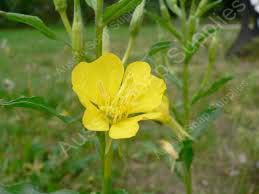
Evening Primrose is a tall spiky plant that only blooms in the evening, hence its common name. Its origins can be traced back to ancient Greece and Rome. In more modern times, it was widely used in the 17th century in Britain and was nicknamed as "king cure-all" and also as a medicinal plant by Native North Americans. Evening Primrose typically contains a minimum 9% GLA, which contributes to good cellular health. More of a skin healer, than a soaping oil. It is one of the few plant sources of GLA (gamma-linoleic acid) which is very therapeutic both internally and in natural skin care products. It is an excellent treatment for dry, flaky skin and skin prone to Eczema. May be used in treatments to help promote healthy cell regeneration.
Suggested Usage Levels: Soap: 3 - 6%, Lotions & Creams: 2 - 5%, Shampoo & Conditioner: 3 - 5%
Grapeseed Oil: Vitis Vinifera
Grape Seed Oil is a polyunsaturated oil that is rich in linoleic acid. It is obtained from the seeds of grapes and has excellent skin spreadability and penetrates quickly. It contains the highest amounts of linoleic acid among any oil or food source. Linoleic is an essential fatty acid, which means that we must consume it in our diet since our bodies cannot produce it; It is a necessity for many functions that maintain normal cell growth throughout our body. This is a green tinted oil and is often used as a massage oil and as a base oil for lotions and creams for its emollient properties. I t is economical and freely available in your supermarket. It is widely used for hair conditioning and styling, imparting a rich silky lustre and enhancing hair growth. This is a light, penetrating oil and is nourishing for all skin types. Its big downfall is its short shelf life so it is not recommended for soap.
Suggested Use Levels: Soap: up to 10%, Lotions & Creams: 2 - 5%, Haircare: 2 - 4%, Massage Oil: up to 80%
Hemp Seed Oil: Cannabis sativa
True decadence! Hemp Seed Oil has been used for centuries in skin care due to its excellent moisturising properties. It is one of the "driest" natural oils available, penetrating quickly! Hemp Seed Oil is valued for cosmetics and toiletries due to its high content of Essential Fatty Acids, which helps the action of hydro lipid coat (reducing TEWL (Trans-Epidermal Water Loss). This lovely dark rich green oil, at over 65% linoleic and oleic, is considered a conditioning oil in Soap Making, but is definitely not for making hard bars! A valuable source of essential fatty acids, high in minerals and Vitamin A. This wonderful emollient oil that is used in lotions, creams, hair conditioners and natural soap. Use a small amount to impart a pale green colour to your face creams. Once saponified your hemp soap retains its gorgeous colour. Great in shampoo bars. Keep Oil Refrigerated to extend its shelf life, or add an antioxidant. Hemp Seed Oil is particularly useful for dry and damaged skin (i.e. eczema, psoriasis and mastalgia.) Hemp provides high fluidity and excellent lubricity without being too greasy.
Suggested Use Levels: Soap: 3 - 10%, Lotions & Creams: 2 - 5%, Hair care: 2 - 4%
Jojoba: Simmondsia Chinensis
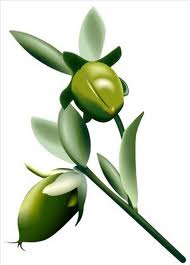
Jojoba is unique in that it is a liquid wax not an oil: it is a cold pressed ester (actually an array of Esters) from the seeds of the desert shrub Simmondsia Chinensis which is found growing in arid areas throughout the world. Jojoba has been used for many years in skin care products because of the healing power that it imparts - it is said to be closely related to human sebum and this makes it very compatible with our skin. It is also said to help fight Acne and Pimples and is wonderful for dry and damaged skin (it is mostly waxes and unsaponifiables, with only 12% fatty acids). Jojoba can be used as a superfatting oil added at the end of HP or in rebatch with no problems...and even a very small amount (1 - 2%) will give a very noticeable difference in feel. Don't overdo it though, as it will tend to cut the lather. Jojoba has a very good effect on the skin acting as a moisturiser and emollient agent to improve skin elasticity and suppleness. Jojoba contains natural tocopherols to minimise oxidation and hence rancidity caused by lipid peroxidation (basically this means it won't go rancid!)
Suggested Use Levels: Soap: 4 - 10%, Lotions & Creams: 3 - 6%, Shampoo & Conditioner: 4 - 5%
Macadamia Oil: Macadamia integrifolia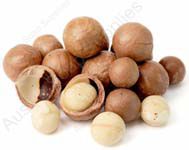
Macadamia Oil is obtained by cold pressing of the seeds of the Macadamia ternifolia tree followed by a full refining process to render oil that is light in colour and mild in odour. The Macadamia tree is a Native Australian rainforest tree, which is evergreen and grows up to 15 meters high. It provides a seed (nut) that is used in confectionery, cooking and now finding its way into cosmetics and soap. Macadamia Oil will not stain clothing, and it has excellent dermal penetration, making it an ideal massage oil. Macadamia is particularly nourishing for dry skin (it is a rich source of palmi oleic acid also found in sebum). Being very similar to Sweet Almond in feel, it is not quite as conditioning. I use this in nearly all my creams and lip balms and ensure it is always in my massage blends. Quite a soft oil in soap, and gives a lovely silky feel and look to your soap. Definitely used for its moisturising benefits, and the texture it gives in Soap, Macadamia Oil offers an exceptionally good emolliency.
Suggested Use Levels: Soap: 2 - 10%, Lotions & Creams: 4 - 10%, Balms: 4 - 10%, Hair Conditioner: 3 - 5%
Macadamia Wax:
A truly unique little Aussie! Great for Vegans (who avoid beeswax), it is useful as a co-emulsifier and adds thickness/texture. A white, very hard, light wax, which can be substituted for beeswax for hardness. Don't overdo it in balms or you will have a slightly grainy texture. You need far less of it, so re-calculating recipes may be required. Not heavy like beeswax, Mac Wax is smooth and non-clogging. There is little information with regards to soap, but too much will have an effect on lather. (If compared to another oil it would probably be like Stearic Acid, not beeswax as its stearic content is very high). Used in soap , keep amounts low or it will cut lather.
Suggested Use Levels: Soap: 2 - 6%, Lotions & Creams: 4 - 10%, Balms: 4 -10%
Mango Butter: Mangifera Indica
Mango Butter is obtained from the fruit seed of the Mango Tree grown in the sub-tropics of India and other parts of the world. From its seed a firm butter is rendered, suitable for soaps, cosmetics, toiletries and pharmaceuticals. Mango Butter exhibits excellent moisturising for lotions and good lubricity on skin. It is a great addition to soap, body products and lip balms due to its moisturising properties. Rich and luxurious, I find Shea or Mango a must in Lotion Bars and Lip Balms. Mango Butter melts readily at skin temperatures making it ideal for sticks, balms and suppositories. It is a staple in our Soap due to the luxurious feel it contributes.
Suggested Use Levels: Soap: 3 - 8%, Lotions & Creams: 3 - 5%, Balms: 5 - 100%
Meadowfoam Seed Oil: Limnanthes Alba (Meadowfoam) Seed Oil
Meadowfoam Seed Oil re-moisturises the skin and hair in ways no other oil does – it is excellent in lip balms too for cracked and dry lips. Meadowfoam is a very stable oil and is high in naturally occurring tocopherols and has a long shelf life. Meadowfoam oil was developed to replace sperm whale oil in the 1970s. The oil from the Meadowfoam plant is recognized for its outstanding oxidative stability which means not only it has a long shelf life, but when blended with other oils, assists lengthen their shelf life too. Meadowfoam is a mild oil which is perfect for sensitive skin and baby products too and gives good slip when used in massage blends. Use Meadowfoam oil in lotion bars and lip balms to extend the shelf life.
Neem Oil: Azadirachtin indica (Neem) Oil
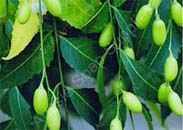
This oil has a VERY distinctive smell and is known for its help with skin problems like Eczema, Psoriasis, and Dry Skin and as a naturalPesticide for farming. The usage recommendations are about 0 5% for soap making. It can be used up to 10% for healing skin care soap for people, but with Dog Soap, it is safe to halve this amount. Neem tends to solidify in cooler weather - gently warm back to liquid. Neem oil has antiseptic properties and can be used in the treatment of dandruff, skin conditions, and oily skin. This oil also has use in insect repellants if you can take the odour! Neem Oil can be found on our Essential Oils page.
Olive Butter: Olea europaea (Olive) Fruit Oil (and) Hydrogenated Vegetable Oil
Olive butter is derived from Olive Oil (Olea europaea) specifically from the Mediterranean area, and is obtained by the cold pressing of selected fruits which makes for a light but rich and soft buttery raw material. Olive Butter is a stable cosmetic butter made from Olive Oil and solid vegetable oils... This cold-pressed Olive Oil is a complex triglyceride containing fatty acids, such as oleic and linoleic acid, tocopherols, squalene and polyphenols. In cosmetic preparations, Olive Butter exhibits excellent spreadability on the skin, making it ideal as a Massage Butter (just add Essential Oils if desired) or as carrier for Essential Oils and actives. Olive Butter helps to moisturise and condition dry skin while adding body to formulations. Olive Butter is recommended for products such as balms, creams, lotions, lip balms, and cleansing products.
Suggested Usage Levels: Soap: 3 - 6%, Lotions & Creams: 3 - 5%, Balms: 5 - 100%, Hair Conditioner: 2 - 3%
Olive Oil: Olea europaea - Pomace, Pure, Virgin, Extra Virgin etc
This oil is very good for the skin, soothing and emollient, a great all rounder which is freely available in Australia. Great in a massage blend, scalp treatments and I use it sparingly in skin creams. Makes what is known as Castile soap, which to be true to its name should be 100% Olive Oil. It makes for small, compact lather when used alone, but you can add a bit of Castor Oil to make larger and longer lasting bubbles. By itself it will make quite a hard bar if left to cure a good few months, if not dried sufficiently, may feel a little slimy. When Castile soap has 5 - 10% (or more) other oil and butters including for faster curing and larger lather, it becomes known as "bastile or bastille" cold process soap.
Suggested Usage Levels: Soaps: 100%, Lotions & Creams: 3 - 10%, Balms: 5 - 80%, Hair Conditioners: 2 - 5%
Palm Oil, Sustainable: Elaeis guinensis

Palm helps create a harder bar, produces quite a conditioning soap, and it is plentiful in Australia. It is now a controversial oil - and though most is used in food products including baked goods as "vegetable shortening" and takeaway food, and bio-diesel production, RSPO accredited Palm or even Green Palm is a better choice if you are concerned about the environment and / or Orangutans. It is used a lot in basic recipes and is an economical oil to incorporate. It has similar properties to Coconut oil and makes an excellent mild soap. If used at too high a percentage, the soap tends to wear away more quickly.
Suggested Usage Level: Soap: 10 - 30%
Palm Kernel Oil: Elaeis guinensis
Creates a lovely hard, silky bar. Use in place of Coconut or with Coconut and other softer oils. Also known as palm nut, it is expeller pressed from the kernels of the palm tree fruit. It is very similar to Coconut oil in that it has a high percentage of lauric acid, which allows it to produce a hard soap with good lather. The difference between Palm Kernel and Palm Oil is that Palm Kernel Oil is white and has a high melting point. Regular Palm oil is more yellow and has a lower melting point. The higher the melt point, the harder the oil, and the harder your soap will be. Also known as PKO. Our PKO is Green Palm certified.
Suggested Use Levels: Soap: 10 - 30%, Balms: 5 - 20%
Rice Bran Oil: Oryza sativa
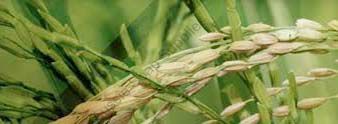
Has a lovely silky nature that I find fabulous in my soap, scrubs and lotions. Use it at around 10% to make a lovely silky lather. Rice Bran Oil has reasonable amounts of linoleic which make it conditioning and give bubbles, but enough oleic to make it more resistant to rancidity. It has become a "must" like Castor in Soap Making. Rice Bran Oil is excellent for use in skin care too. Rice Bran Oil is stable to oxidation and contains Vitamin-E group anti-oxidants such as Tocopherol, and Tocotrienol. Rice Bran Oil has only recently become popular in the Western World, but it has been used traditionally in Japan and other countries for a very long time. The oil has a lovely feel in formulations.
Suggested Usage Levels: Soap: 5 - 20%, Lotions & Creams: 3 - 5%, Massage Oils: 20 - 60%, Balms: 10 - 40%
Rosehip Oil, Pure: Rosa Canina
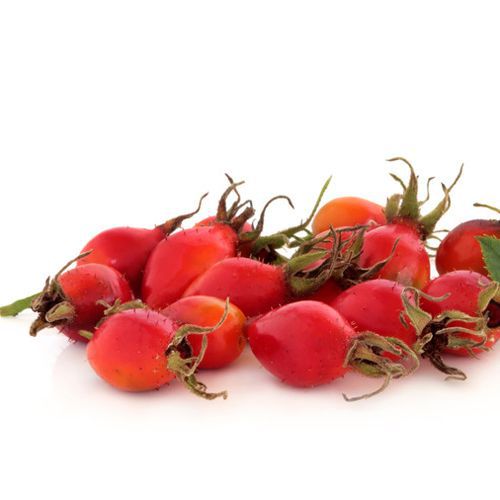
Our Pure, Cold Pressed Rosehip Oil is high in Vitamin A and is classified as a Base or Fixed Oil, which means it can be used directly on the skin (neat). This rejuvenating Oil assists the healing of scars - lessening the formation of keloid scar tissue (ugly raised thickened scars) and is helpful in the treatment of burns and stretch marks and in after Sun Care Creams. Use in skin healing salves and creams to accelerate healing and tissue regeneration. High in Vitamin A, Rosehip Oil is very useful for very Dry, and Damaged Skin, Sunburn, Age Spots, Wrinkles and in Eye Creams. Rosehip is non-greasy, absorbed quickly and is safe to apply directly, even on sensitive skin.
Suggested Usage Levels: Soap: 3 - 6%, Lotions & Creams: 2 - 20%, Hair Conditioner: 2 - 5%, Direct application: 100%
Sesame Oil: Sesamum Indicum (Sesame) Seed Oil
Sesame Oil is used in Ayurvedic medicine and is said to be beneficial for Psoriasis, Eczema, Rheumatism, and Arthritis. **Make sure you use deodorised oil or you will end up smelling like a stir-fry!
Suggested Use Levels: Soap: 10%, Massage Oil: up to 80%
Shea Butter, Organic: Butyrospermum Parkii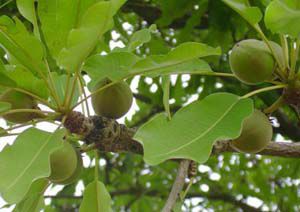
Shea Butter (also known as Karite Butter or African Butter) is obtained from the seed of the Karite Tree (Butyrospermum Parkii) common to West Africa. From the seeds a soft, pliant "butter" is expeller pressed without the use of solvents (or gases), making it suitable for use in soaps, cosmetics, toiletries and OTC Pharmaceuticals. Our Shea Butter is deodorized and filtered using natural clays and steam to render a "butter" which is nearly white and odourless. Shea Butter is well known to assist skin dryness; Shea melts at skin temperature, making it ideal for lip and body balms as well as bar soaps, lotions and skin creams Shea has generous moisturising properties and I use Shea in nearly all my creams and with buttermilk in soap. It is about 8% unsaponifiable which makes it a great addition for soaps, however watch the trace as it does tend to accelerate. For me it needs to be treated like Cocoa Butter in soap, as it does accelerate trace a little. It does contribute a satiny feel to your finished bar.
Suggested Usage Levels: Bar Soap: 3 - 10%, Lotions & Creams: 3 - 5%, Balms: 5 - 100%, Hair Conditioner: 2 - 5%
St Johns Wort, Infused: Hypericum Infused Oil
When Hypericum is infused into a good carrier oil like Olive or Sweet Almond; it becomes a ruby red colour. It has been used for giving relief to muscular pain and to help relieve nervous skin rashes. It is an anti-inflammatory oil that is soothing and helpful to wounds.
Suggested Usage Level: Up to 20% when in a carrier.
Soybean: Glycine Soja (Soybean) Oil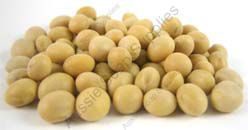
Similar to using Canola in your soap. After 25+ years of soaping I rarely ever include canola in my soaps. I did use this economical oil for a couple of years, and wondered why my soap would DOS and in hot weather my soap would ooze and weep a light brown liquid after 4 - 6 months - the answer was soy - I was using it at 50% of my batch. It is a conditioning, but soft oil with stable lather. Makes quite a slippery bar, and blends well with lots of hard oils to make your soap last. I find this quite smooth on my skin and I love its properties in soap, I keep my percentages quite low when I use it now. Keep Soy Oil at 10% or lower. and combine with Coconut Oil, Palm Oil and other solid performers in soap
Suggested Usage Level: Not more than 10% in Soap
Sunflower Oil: Helianthus Annuus (Sunflower) Seed Oil
An emollient oil extracted from sunflower seeds. Rich in essential fatty acids, it is a good base for massage oils, creams, lotions and natural soap.Sunflower will slow trace in cold process soap which is useful for those who like to *play*, but does has a short shelf life, so use it when you purchase it and make sure its fresh, keeping the percentage low. Excellent for use in cosmetics as it will not irritate the skin or aggravate acne, so its good for all skin types.
Suggested Use Levels: Soap up to 10%, Lotions & Creams: 5 - 15%
Wheatgerm Oil: Tritcum durum 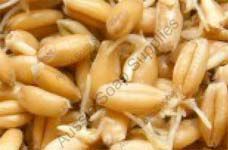
Wheatgerm Oil is expeller pressed without the use of chemical solvents. Wheatgerm is rich in octacosanola potent source of energy. it is also rich in naturally occurring antioxidants including vitamin E and Beta Carotene, and also contains naturally occurring phosphatides and phytosterols. It is also purported to enhance cellular health. This deep orange/brown oil has a distinguishing strong smell. Due to its level of Vitamin E, which is a natural Antioxidant, it has a long shelf life. The oil itself is thickish and sticky, but blended with other oils, makes rich ingredient and is a good addition to facial creams, lotions and oil blends. It can taste and smell strong, so you need to balance this within your recipe...
Suggested Use Levels: Soap: 5 - 10%, Lotions & Creams: 5 - 15%, Balms: 5 - 10%, Hair Conditioner: 5 - 8%
Soapy Oil FAQ
Each skin can feel oil differently, so opinions may vary .... and experimenting is really the most accurate indicator which oils you will list as your own favourites. I have compiled some commonly asked questions about oils and butters in soapmaking below:
Do I need to know about the SAP Value?
The saponfication value (number) is the amount of lye needed to completely saponify 1 gram of an oil or butter. If you aren't a maths type, or a chemist type, you can make perfectly great soap without this knowledge by using an online calculator to calculate the best oils and the correct lye amount for your recipe. This link has a list of online calculators: Lye and Metric Conversion Calculators.
SAP values are usually given in ranges (figures can vary from processer to processor and season to season), so choose the middle value if this is the case. If the SAP value is, say, 0.145 this means it needs 0.145g of lye (sodium hydroxide) to turn 1g of oil into soap.
I've read I need melt all my Palm Oil before I use it, is this correct?
This will vary from supplier to supplier. For our palm oil, no you don't. If you purchase palm in volume in tins, or if you purchase some and it's quite yellow with white "bits" floating around, then you do need to melt it all and mix it. The white "bits" are stearin, and you need to make sure this is evenly distributed throughout the oil.
I have no Palm Oil left, can I just use Palm Kernel or I have no Palm Kernel Oil left, can I just use Palm instead?
In a word, no you can't. Palm Oil and Palm Kernel Oil come from entirely different parts of the fruit and both have different SAPs and give different results in your soap. Palm oil is an economical oil that goes hand in hand with Coconut Oil and contributes to lather and texture. Palm Kernel Oil makes a hard, tighter textured bar with a nice shine. In fact the SAP value of Palm Kernel oil is actually much closer to Coconut Oil than Palm Oil.
this leads to the question:
I'm out of xxx oil, can I just grab some xxx oil and substitute it?
The answer is yes and no, sometimes you might, sometimes you won't be able to. All oils have a different requirement for saponfication. It is dependant on the amount of the oil you want to substitute, the batch size and which oils. You can sometimes use a small amount of another oil, or an oil with a similar SAP and just sub it in. However, my personal recommendation is to ALWAYS run this new recipe through a lye calculator.
You've sent the wrong coconut oil, it was hard last time I bought it and Do I need to heat this if it's sloppy when it arrives and Why is this packed in a jerry can when it's hard?
Regular Coconut oil has a low melt point, and in summer it will arrive completely liquid. If you put the container into the fridge it will soon be hard and white. Only Fractionated Coconut Oil is always liquid, and it cannot be substituted in your soap without recalculating the lye.
If it is sloppy when it arrives, either shake or stir it to mix it up and you are good to go
With the high temperatures Australia experiences, and long road trips for parcels, it's virtually impossible to ship coconut oil in pails without leakage. We tried several different style of seals on pails, but in the end we had to accept that it was going to leak. To deal with hard coconut, you can either slice the top from the jerry can and scoop it out, or stand in hot water (or the sun) and it will soon be soft.
I made your 100% Olive Oil soap recipe and it's soft and has a slimy feeling when I use it. Is it because it took AGES to trace? What did I do wrong?
Our first response is: When did you make it? Is it at least 4 - 6 months old? Castile, or 100% olive benefits from a LONG cure period, and if experienced a discounted water amount. If you wash with young castile it will feel slippy and slimy and have poor lather, if any. Castile also takes a long time to trace so you will find you are mixing with your stick blender 3 times as long as you would with a blended oil recipe. This is useful for making complicated designs or fast moving fragrances.
This oil smells really .... oily, is it off?
Though best by dates are a really great guide to shelf life, you can use oils longer than their dates providing they have been stored carefully and away from heat (the fridge is great!). If an oil (or butter) is going rancid or is rancid you will know. Sniff and look at it. It will smell ick.... and it will be a darker colour, and the odour is really distinct. I have made soap with Cocoa Butter that was on the turn, and it has turned the soap rancid in a week or two, I have made 100% olive soap with a 2 year shelf date and the same thing happened within weeks, and I have made soap with 100% mango butter that was well past its date and it was georgeous. However, fresher is always better!
I bought unrefined Shea and it stinks and it's a weird colour....can I still make soap?
We made a decision not stock this type of shea many years ago when it was first "big" in the soaping world. The supply of unrefined shea is a little unpredictable and some of it can smell really rank and be a terrible colour too. If you have purchased some you'll need to decide how bad you feel it smells. If it's "nutty" and you like the odour, go for it and match it with a fragrance or essential oil that's complimentary. If it's awful and strong, you won't be able to hide that in your soap. The word "unrefined" is the clue, it's not filtered meticulously and it's not deodorised.




